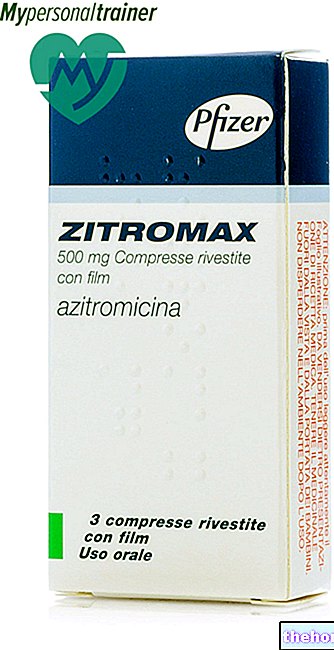Active ingredients: Dexamethasone
ETACORTILEN 0.15% Eye drops, solution
ETACORTILEN 0.15% Eye gel
Why is Etacortilen used? What is it for?
Pharmacotherapeutic group
Anti-inflammatory, non-associated corticosteroids.
Therapeutic indications
Spring conjunctivitis, allergic. Allergic blepharitis and blepharoconjunctivitis. Allergic keratoconjunctivitis; sclerites, episclerites; uveitis.
Contraindications When Etacortilen should not be used
- Known individual hypersensitivity to the active substance or to any of the excipients.
- Intracular hypertension.
- Herpes simplex.
- Corneal virus infections in acute ulcerative phase.
- Conjunctivitis with ulcerative keratitis even in the initial phase (positive fluorescein test).
- Tuberculosis and mycosis of the eye.
- Acute purulent ophthalmias.
- Purulent conjunctivitis.
- Purulent and herpetic blepharitis.
- Sty.
- Corneal injuries or abrasions.
- Children under the age of three.
- Generally contraindicated in pregnancy and lactation.
Precautions for use What you need to know before taking Etacortilen
The use of corticosteroids, especially if prolonged, can cause an increase in intraocular pressure. It is therefore advisable to control the intraocular pressure if corticosteroids are used for more than two weeks. Since corticosteroids also favor the onset of cataracts, it is advisable not to use it for long periods of time.
In the presence of viral infections, corticosteroids can favor the aggravation of the disease with irreversible opacification of the cornea (see Contraindications).
Particular attention should be paid to pathologies accompanied by corneal thinning.
In herpetic keratitis it is not recommended to use it, which may possibly be allowed under close supervision of the ophthalmologist.
Interactions Which drugs or foods can modify the effect of Etacortilen
Not known.
Tell your doctor or pharmacist if you have recently taken any other medicines, even those without a prescription.
Warnings It is important to know that:
Local administration of corticosteroids to patients with bacterial, viral or fungal conjunctivitis may mask the signs of progression of the infection.
The use of corticosteroids in the presence of lesions delays the healing of the injured tissues, favoring the onset and spread of any infections.
In children from 3 to 12 years of age, the medicine should be administered in cases of real need and under the direct supervision of the doctor.
Etacortilen eye drops, solution in multidose bottle contains sodium metabisulphite which can cause allergic reactions and severe asthmatic attacks in sensitive subjects and particularly in asthmatics.
Etacortilen eye drops, solution in multidose bottle contains benzalkonium chloride which is usually used as a preservative in ophthalmic products. Benzalkonium chloride has been reported to cause punctate keratopathy and / or toxic ulcerative keratopathy, may cause eye irritation and discolouration of soft contact lenses. Careful monitoring is required in dry eye patients who use Etacortilen frequently. or for prolonged periods, or in cases where the cornea is compromised. Since contact lenses can absorb benzalkonium chloride, they must be removed before application of Etacortilen, and can be reapplied after 15 minutes (see Dose, method and time of administration).
Pregnancy and breastfeeding
In pregnant women, the product should be administered in cases of real need under the direct supervision of the doctor.
Ask your doctor or pharmacist for advice before taking any medicine.
Effects on ability to drive and use machines
Etacortilen does not affect the ability to drive or use machines.
Dosage and method of use How to use Etacortilen: Dosage
Eye drops, solution
One drop of eye drops, solution to be instilled in the conjunctival fornix three - four times a day or according to medical prescription.
Eye gel
A drop of ophthalmic gel to be instilled in the conjunctival fornix three - four times a day or according to medical prescription.
Instructions for Use
Eye drops, solution in multidose bottle:
- Remove the aluminum capsule by pulling the central disk first upwards then outwards and downwards, following the indentations.
- Remove the cap from the bottle and insert the dropper.
- After removing the protective cap from the dropper, turn the bottle upside down and instill by pressing.
- If contact lenses are used, they must be removed prior to instillation of the eye drops and can be reapplied after 15 minutes.
Eye drops, solution in single-dose containers:
- Make sure that the single dose is intact.
- Detach the single-dose from the strip.
- Open by turning the top without pulling.
Eye gel in single-dose containers:
- Make sure that the single dose is intact.
- Detach the single-dose from the strip.
- Grasp the single-dose container by the base.
- Shake it down.
- Open by twisting the top and pulling.
Overdose What to do if you have taken too much Etacortilen
No cases of overdose have been reported.
The product, if accidentally ingested or if used for a long time in excessive doses, can cause toxic phenomena.
In case of accidental ingestion / intake of an excessive dose of ETACORTILEN, notify your doctor immediately or go to the nearest hospital.
If in doubt about the use of ETACORTILEN, ask your doctor or pharmacist.
Side Effects What are the side effects of Etacortilen
Like all medicines, ETACORTILEN can cause side effects, although not everybody gets them.
Possible side effects due to the corticosteroid are:
- increase in intraocular pressure after 15-20 days of topical application in predisposed patients or glaucomatosis;
- posterior sub-capsular cataract formation following prolonged treatments;
- development or aggravation of Herpex simplex or fungal infections;
- delayed healing. In all these cases it is advisable to suspend the treatment and resort to adequate therapy.
Occasionally the product can cause mild itching or burning.
If any of the side effects gets serious, or if you notice any side effects not listed in this leaflet, please inform your doctor or pharmacist.
Expiry and Retention
See the expiry date printed on the package.
The expiry date refers to the product in intact packaging, correctly stored.
Warning: do not use the medicine after the expiry date shown on the package.
Storage precautions
Do not store above 25 ° C.
The multidose bottle eye drops must be used within 30 days of first opening the bottle; after this period the residual medicinal product must be discarded.
Eye drops and eye gel in single-dose containers should be used immediately after opening the container; residual medicine should be discarded.
After opening the aluminum sachet the containers must be used within 28 days: after this period the residual containers must be discarded.
KEEP OUT OF THE REACH AND SIGHT OF CHILDREN.
Medicines should not be disposed of via wastewater or household waste. Ask your pharmacist how to throw away medicines you no longer use. This will help protect the environment.
Other information
Composition
ETACORTILEN 0.15% Eye drops, solution in multidose bottle
1 ml of solution contains:
- Active ingredient: Dexamethasone sodium phosphate 1.5 mg
- Excipients: Borax, Sodium chloride, Polysorbate 80, Alcohol, Sodium citrate, Sodium metabisulfite, Disodium edetate, 1N hydrochloric acid, Phenylethyl alcohol, Benzalkonium chloride, Creatinine, Purified water.
ETACORTILEN 0.15% Eye drops, solution in single-dose container
1 ml of solution contains:
- Active ingredient: Dexamethasone sodium phosphate 1.5 mg
- Excipients: Sodium citrate, Monobasic sodium phosphate monohydrate, Disodium phosphate dodecahydrate, Purified water.
ETACORTILEN 0.15% Eye gel
1 ml of gel contains:
- Active ingredient: Dexamethasone sodium phosphate 1.5 mg
- Excipients: Sodium citrate, Monobasic sodium phosphate monohydrate, Disodium phosphate dodecahydrate, Xanthan gum, Purified water.
Pharmaceutical form and content
Eye drops, solution
Carton of a 3 ml bottle; Cartons of 10 or 20 single-dose containers of 0.3 ml; each strip of 5 containers is packed in an aluminum bag.
Eye gel
Packs of 20 single-dose containers of 0.4 ml; each strip of 5 containers is packed in an aluminum bag.
Source Package Leaflet: AIFA (Italian Medicines Agency). Content published in January 2016. The information present may not be up-to-date.
To have access to the most up-to-date version, it is advisable to access the AIFA (Italian Medicines Agency) website. Disclaimer and useful information.
01.0 NAME OF THE MEDICINAL PRODUCT
ETACORTILEN
02.0 QUALITATIVE AND QUANTITATIVE COMPOSITION
EtaCortilen 0.15% Eye drops, solution
1 ml of solution contains:
Dexamethasone sodium phosphate 1.5 mg
EtaCortilen 0.15% Eye gel
1 ml of gel contains:
Dexamethasone sodium phosphate 1.5 mg
For the complete list of excipients see section 6.1
03.0 PHARMACEUTICAL FORM
Eye drops, solution
Eye gel
04.0 CLINICAL INFORMATION
04.1 Therapeutic indications
Spring conjunctivitis, allergic. Allergic blepharitis and blepharoconjunctivitis. Allergic keratoconjunctivitis; sclerites, episclerites; uveitis.
04.2 Posology and method of administration
Eye drops, solution
One drop of eye drops, solution to be instilled in the conjunctival fornix three - four times a day or according to medical prescription.
Eye gel
A drop of ophthalmic gel to be instilled in the conjunctival fornix three - four times a day or according to medical prescription.
Instructions for Use
Eye drops, solution in multidose containers:
1) Remove the aluminum cap by pulling the central disk first upwards then outwards and downwards, following the indentations.
2) Remove the cap from the bottle and insert the dropper.
3) After removing the protective cap of the dropper, turn the bottle upside down and instill by pressing.
4) In case of use of contact lenses, these must be removed before instillation of the eye drops and can be reapplied after 15 minutes.
Eye drops, solution in single-dose containers:
1) Make sure that the single dose is intact.
2) Detach the single dose from the strip.
3) Open by turning the top without pulling.
Eye gel in single-dose containers:
1) Make sure that the single dose is intact.
2) Detach the single dose from the strip.
3) Grasp the single-dose container by the base.
4) Shake it down.
5) Open by turning the top and pull.
04.3 Contraindications
Known individual hypersensitivity to the active substance or to any of the excipients.
Intracular hypertension.
Herpes simplex.
Corneal virus infections in acute ulcerative phase.
Conjunctivitis with ulcerative keratitis even in the initial phase (positive fluorescein test).
Tuberculosis and mycosis of the eye.
Acute purulent ophthalmias.
Purulent conjunctivitis.
Purulent and herpetic blepharitis.
Sty.
Corneal injuries or abrasions.
Children under the age of three.
Generally contraindicated in pregnancy and lactation.
04.4 Special warnings and appropriate precautions for use
The use of corticosteroids, especially if prolonged, can cause an increase in intraocular pressure. It is therefore advisable to control the intraocular pressure if corticosteroids are used for more than two weeks. Since corticosteroids also favor the onset of cataracts, it is advisable not to use it for long periods of time. Particular attention should be paid to pathologies accompanied by corneal thinning.
In the presence of viral infections, corticosteroids can favor the aggravation of the disease with irreversible opacification of the cornea (see section 4.3).
In herpetic keratitis it is not recommended to use it, which may possibly be allowed under close supervision of the ophthalmologist.
Local administration of corticosteroids to patients with bacterial, viral or fungal conjunctivitis may mask the signs of progression of the infection.
The use of corticosteroids in the presence of lesions delays the healing of the injured tissues, favoring the onset and spread of any infections.
In children from 3 to 12 years of age, the medicine should be administered in cases of real need and under the direct supervision of the doctor.
Etacortilen eye drops, solution in multidose bottle contains sodium metabisulphite which can cause allergic reactions and severe asthmatic attacks in sensitive subjects and particularly in asthmatics.
Etacortilen eye drops, solution in multidose bottle contains benzalkonium chloride which is usually used as a preservative in ophthalmic products. Benzalkonium chloride has been reported to cause punctate keratopathy and / or toxic ulcerative keratopathy, may cause eye irritation and discolouration of soft contact lenses. Careful monitoring is required in dry eye patients who use Etacortilen frequently. o for prolonged periods, or in cases where the cornea is compromised. Since contact lenses can absorb benzalkonium chloride, they must be removed before the application of Etacortilen, and can be reapplied after 15 minutes (see par. 4.2) .
04.5 Interactions with other medicinal products and other forms of interaction
Not known.
04.6 Pregnancy and breastfeeding
In pregnant women, the product should be administered in cases of real need under the direct supervision of the doctor.
04.7 Effects on ability to drive and use machines
Etacortilen does not affect the ability to drive or use machines.
04.8 Undesirable effects
Possible side effects due to the corticosteroid are:
1) increase in intraocular pressure after 15-20 days of topical application in predisposed patients or glaucomatosis;
2) formation of posterior sub-capsular cataract following prolonged treatments;
3) development or aggravation of infections from Herpes simplex or fungal;
4) delayed healing.
In all these cases it is advisable to suspend the treatment and resort to adequate therapy.
Occasionally the product can cause mild itching or burning.
04.9 Overdose
No cases of overdose have ever been reported.
The product, if accidentally ingested or if used for a long time in excessive doses, can cause toxic phenomena.
05.0 PHARMACOLOGICAL PROPERTIES
05.1 Pharmacodynamic properties
ATC code: S01BA01 Therapeutic drug category: Anti-inflammatory, non-associated corticosteroids.
Dexamethasone sodium phosphate is a corticosteroid with an intense anti-inflammatory activity equal to 25 times that of hydrocortisone. Like all corticosteroid drugs, the anti-inflammatory activity is mainly carried out by inhibiting the release of arachidonic acid precursor of the most important mediators of inflammation, prostaglandins and leukotrienes. The steroid acts by inducing the synthesis of a protein, lipomodulin, which in turn inhibits the action of the enzyme responsible for the release of arachidonic acid, phospholipase A2.
05.2 Pharmacokinetic properties
Corticosteroids typically reach therapeutic intraocular concentrations after instillation into the conjunctival sac. The degree of penetration however depends on the molecular characteristics and chemical form of the steroid.
05.3 Preclinical safety data
In animal studies, dexamethasone was well tolerated after local application for up to 6 months in rabbits and rats. The main symptoms of toxicity found in all animal species after oral administration are related to adrenocorticosteroid effects and include alteration of the pituitary - adrenal axis and mild anemia. The main signs of toxicity have occurred in the stomach, liver, adrenal gland, pituitary, lungs and spleen.
In studies conducted after topical application, most of these were either absent or considerably low.
06.0 PHARMACEUTICAL INFORMATION
06.1 Excipients
Eye drops, solution in multidose bottle:
Borax, sodium chloride, polysorbate 80, alcohol, sodium citrate, sodium metabisulfite, disodium edetate, 1N hydrochloric acid, phenylethyl alcohol, benzalkonium chloride, creatinine, purified water.
Eye drops, solution in single-dose containers:
Sodium citrate, Monobasic sodium phosphate monohydrate, Disodium phosphate dodecahydrate, Purified water.
Eye gel in single-dose containers:
Sodium citrate, Monobasic sodium phosphate monohydrate, Disodium phosphate dodecahydrate, Xanthan gum, Purified water.
06.2 Incompatibility
None known.
06.3 Period of validity
2 years.
The multidose bottle eye drops must be used within 30 days of first opening the bottle; after this period the residual medicinal product must be discarded.
Eye drops and eye gel in single-dose containers should be used immediately after opening the container; residual medicine should be discarded.
After opening the aluminum sachet the containers must be used within 28 days: after this period the residual containers must be discarded.
06.4 Special precautions for storage
Do not store above 25 ° C.
06.5 Nature of the immediate packaging and contents of the package
Eye drops, solution in multidose bottle:
Amber glass bottle containing 3 ml of solution.
Eye drops, solution in single-dose containers:
Low density polyethylene containers containing 0.3 ml of solution.
Packs of 10 or 20 containers. 5-container strips are packed in aluminum bags.
Eye gel in single-dose containers:
Low density polyethylene containers containing 0.4 ml of gel.
Packs of 20 containers.5-container strips are packed in aluminum bags.
06.6 Instructions for use and handling
No particular.
07.0 MARKETING AUTHORIZATION HOLDER
S.I.F.I. S.p.A. - Registered office: Via Ercole Patti, 36 - 95020 Lavinaio - Aci S. Antonio (CT)
08.0 MARKETING AUTHORIZATION NUMBER
Etacortilen 0.15% eye drops, solution - 3 ml bottle AIC 018805010
Etacortilen 0.15% eye drops, solution - 10 single-dose containers 0.3 ml AIC 018805034
Etacortilen 0.15% eye drops, solution - 20 single-dose containers 0.3 ml AIC 018805022
Etacortilen 0.15% ophthalmic gel - 20 single-dose containers 0.4 ml AIC 018805046
09.0 DATE OF FIRST AUTHORIZATION OR RENEWAL OF THE AUTHORIZATION
May 1961 / June 2010
10.0 DATE OF REVISION OF THE TEXT
AIFA Determination of December 2010




























